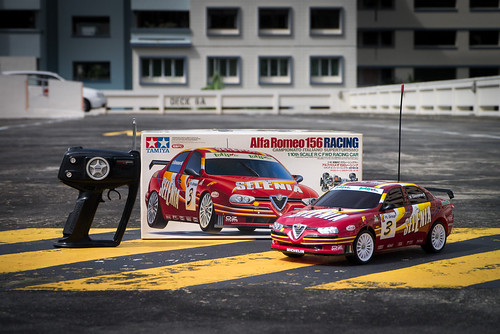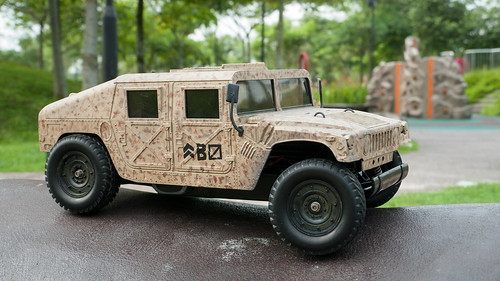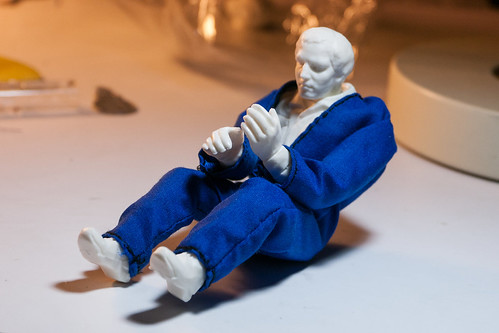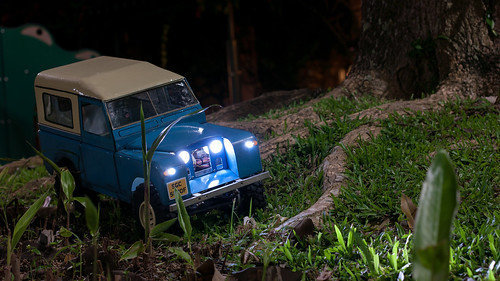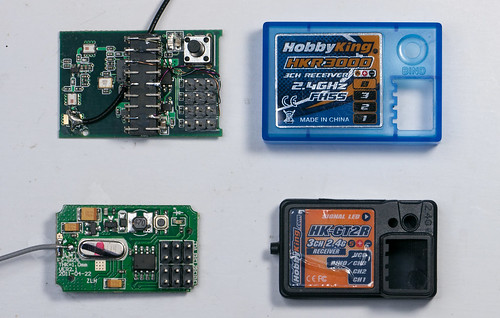A few weeks ago we bought a cheap second hand TT-01 because LANE Boys Snr. wanted to have a 10th scale touring car for relaxing in the local park. Along with the TT-01 came another box: A semi-vintage FF02 Alfa Romeo 156. The body shell had been used quite a bit and was heavily damaged. The chassis was incomplete, but in excellent condition. The front uprights were stripped where the king pin screws go in; turn buckles, servo mounts and a drive shaft were missing, but the rest of the vehicle looked like the car was never run before.
So we've set out to rebuild the car to its former glory.
